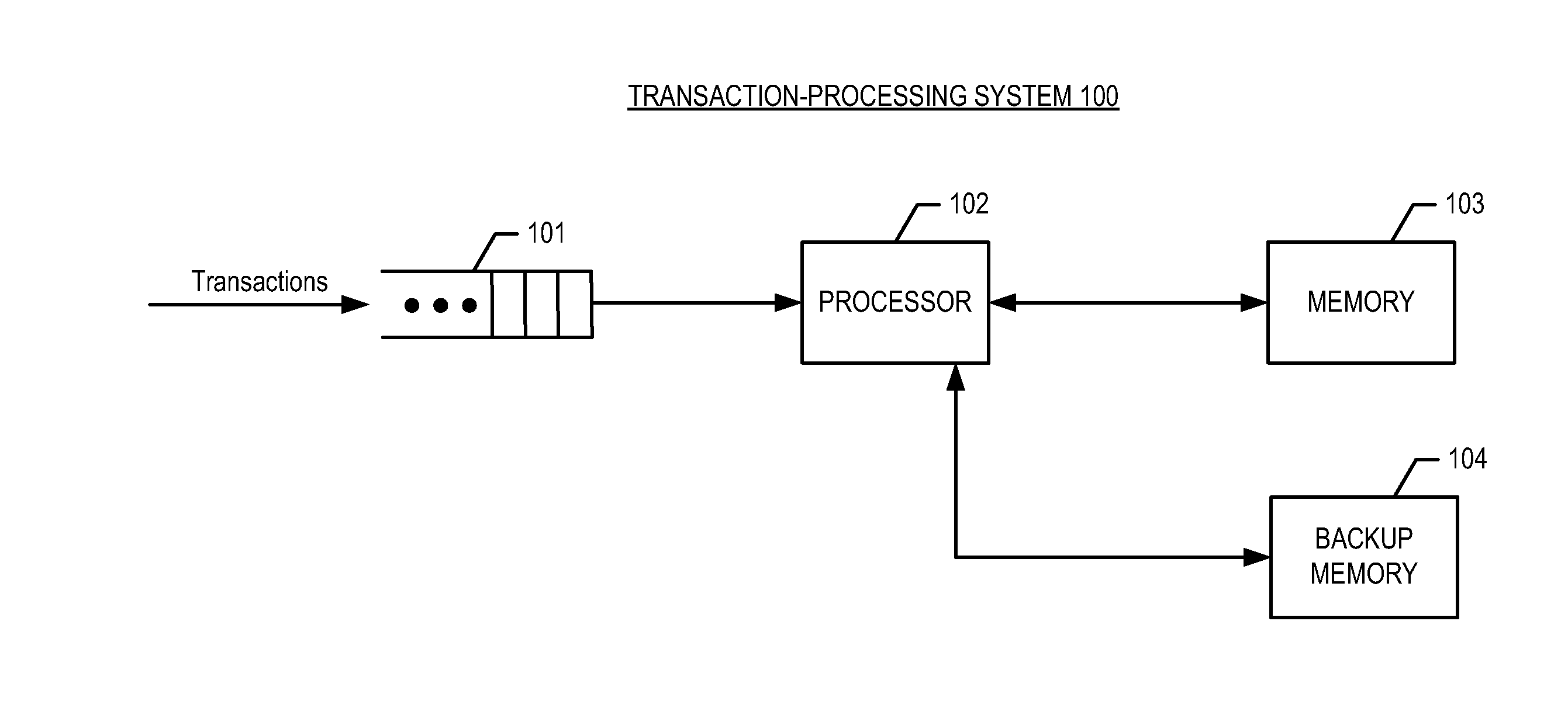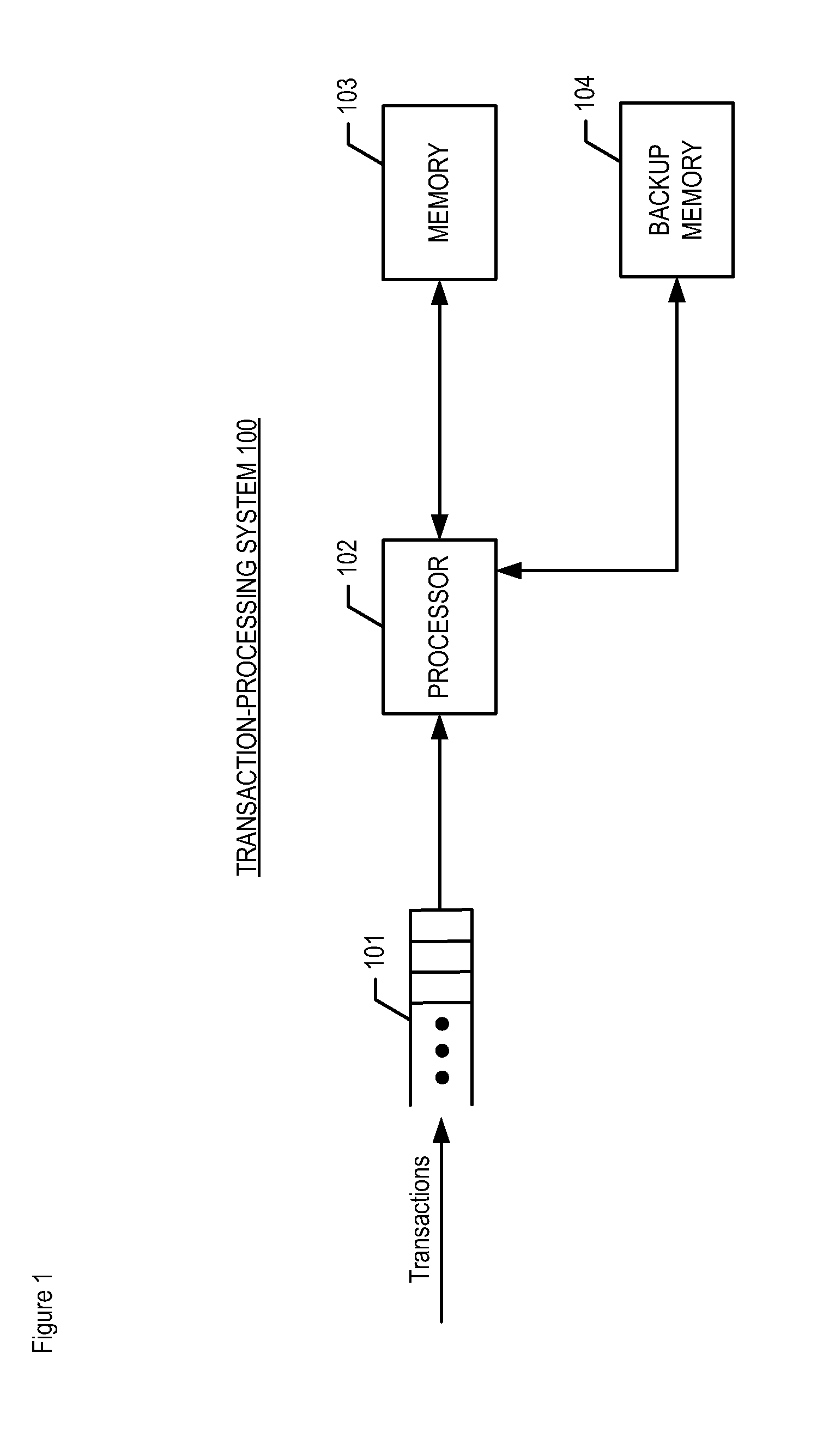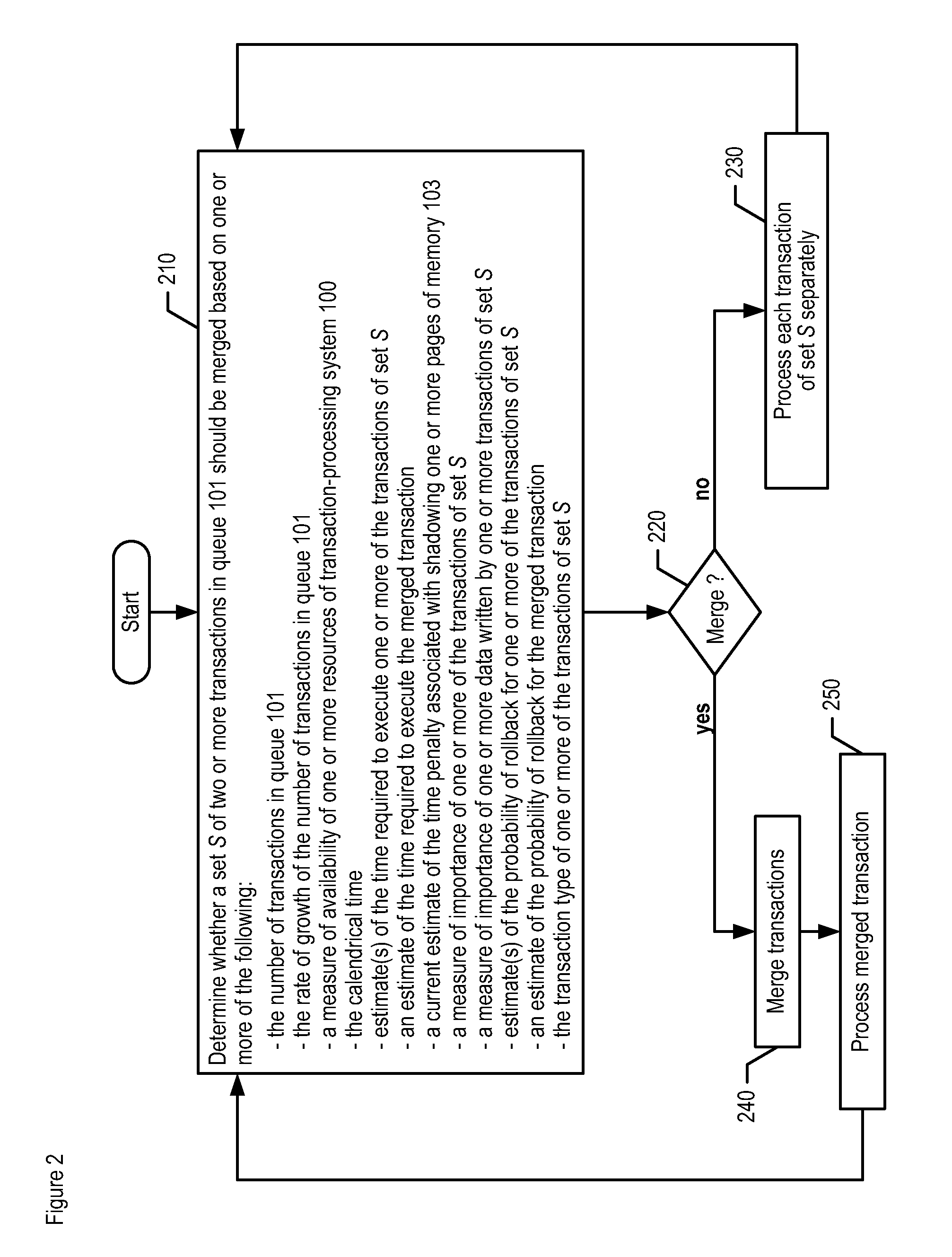Intelligent Transaction Merging
- Summary
- Abstract
- Description
- Claims
- Application Information
AI Technical Summary
Benefits of technology
Problems solved by technology
Method used
Image
Examples
Embodiment Construction
[0011]For the purposes of this specification, the term “page” is defined as a fixed number of bytes of memory—perhaps forced to be aligned on a boundary such as an integer multiple of that size—and applies to virtual memory as well as physical memory.
[0012]For the purposes of the specification and claims, the term “calendrical time” is defined as indicative of one or more of the following:
[0013](i) a time (e.g., 16:23:58, etc.),
[0014](ii) one or more temporal designations (e.g., Tuesday, November, etc.),
[0015](iii) one or more events (e.g., Thanksgiving, John's birthday, etc.), and
[0016](iv) a time span (e.g., 8:00 PM to 9:00 PM, etc.).
[0017]FIG. 1 depicts a block diagram of the salient elements of illustrative transaction-processing system 100, in accordance with the illustrative embodiment of the present invention. As shown in FIG. 1, transaction-processing system 100 comprises transaction queue 101, processor 102, memory 103, and backup memory 104, interconnected as shown.
[0018]T...
PUM
 Login to View More
Login to View More Abstract
Description
Claims
Application Information
 Login to View More
Login to View More - R&D
- Intellectual Property
- Life Sciences
- Materials
- Tech Scout
- Unparalleled Data Quality
- Higher Quality Content
- 60% Fewer Hallucinations
Browse by: Latest US Patents, China's latest patents, Technical Efficacy Thesaurus, Application Domain, Technology Topic, Popular Technical Reports.
© 2025 PatSnap. All rights reserved.Legal|Privacy policy|Modern Slavery Act Transparency Statement|Sitemap|About US| Contact US: help@patsnap.com



